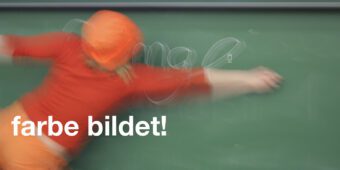The vivid knowledge of our memory is constantly updated through the perception of the present. Nevertheless, the changes in people, places and things are not lost, but remain in our memories. We can use this developmental perspective of events as we mentally walk through the imagination for our behavior in the present and for planning the future.
In relation to the context, the characteristic dynamics in the color and light structure refer to states of behavior, courses of action, intentions of movement, processes of aging, growth, proliferation, destruction or decay. The causes of our changes, as well as those of our environment, are manifold. Nevertheless, we only see the reasons for the change in our personality and living environment that are recognizable to us from the present point of view. This way of looking at our past is represented in autobiographical memory. Every time we change our perspective on the events we have already experienced, the entire temporal perspective of our own past, present and future changes.
A vivid example of the changes in human vision over time can be found in the artifacts of the cultural area. This shows us the development of the world of ideas and the changing zeitgeist. The categorization of cultural history according to descriptive criteria in epochs or styles refers to the concise changes in the world of imagination of our species. Settlements, architecture, everyday objects, sculptures and works of art, like books, provide us with vivid information about the imaginary worlds of individuals and societies. In it we find a historical and contemporary archive of ideas whose intellectual potential we can tap into to the extent that we develop a historical consciousness. The basis for this is the methodical promotion of visual skills, which we can use in the sense of reading skills.


